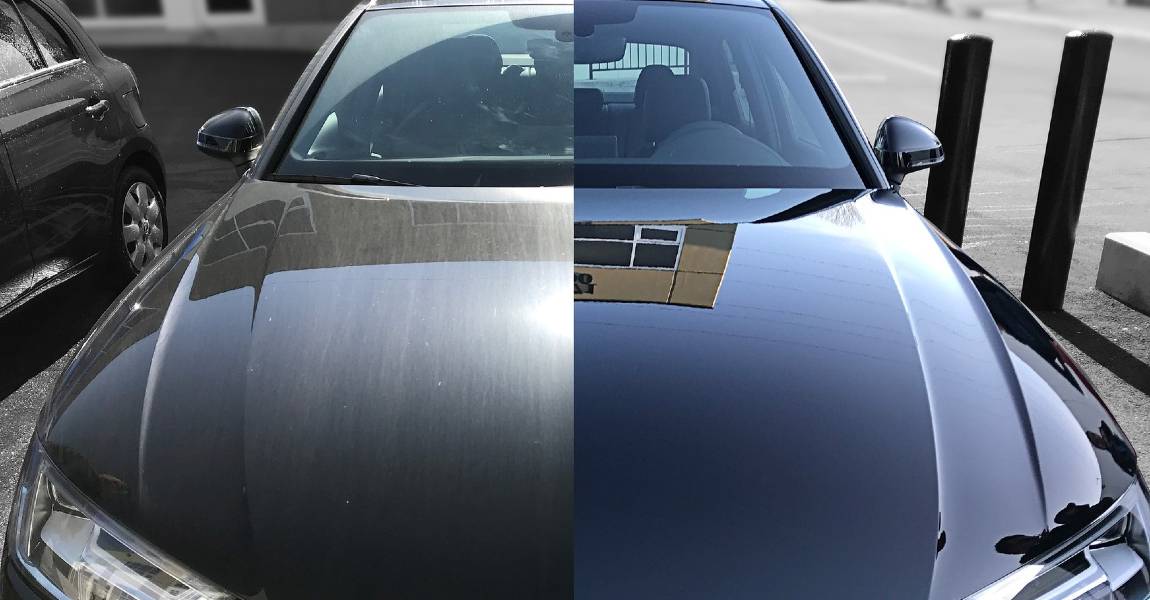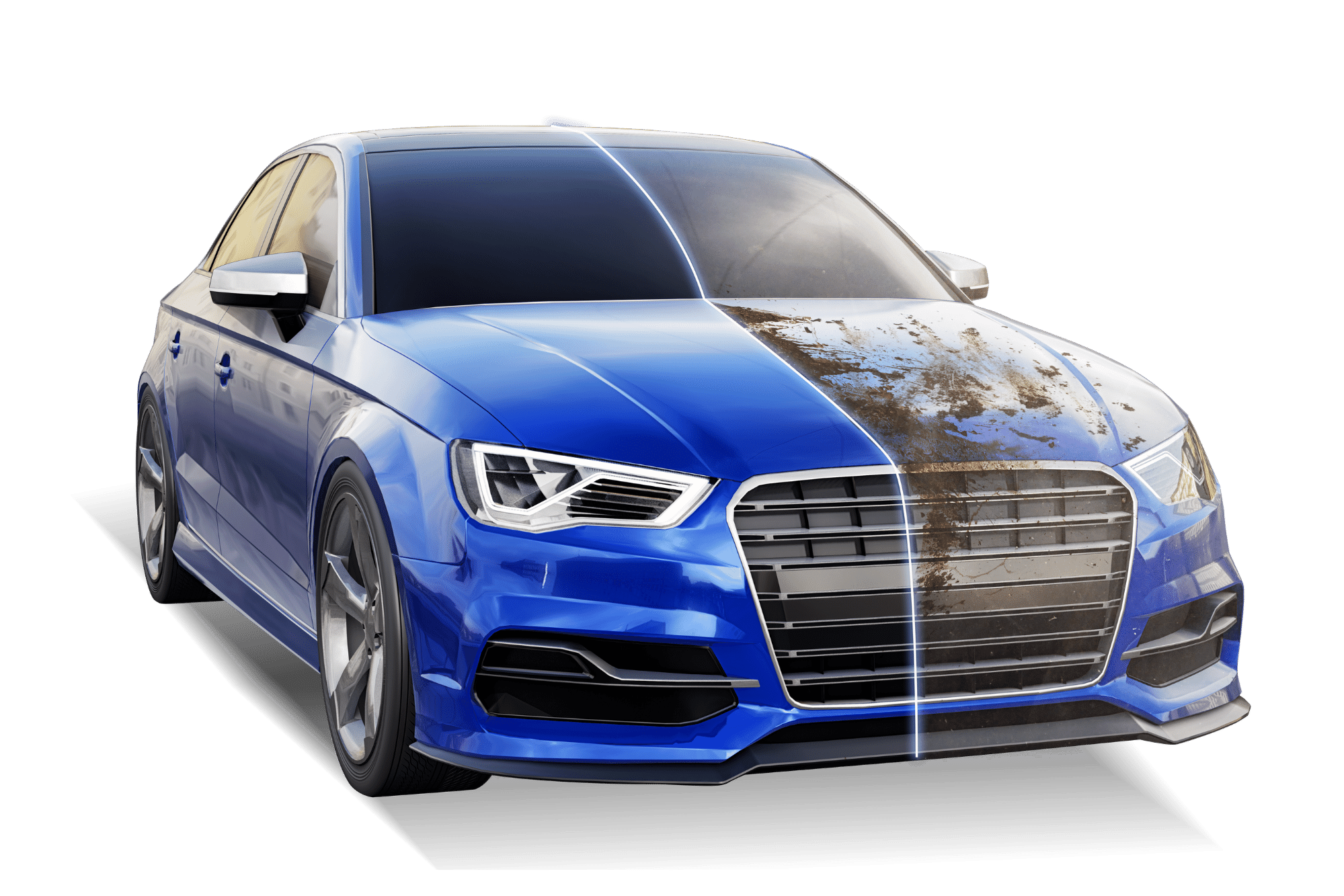A Comprehensive Overview to the Sorts Of Ceramic Coating on the marketplace
Ceramic finishes have emerged as a pivotal remedy across various markets as a result of their unique residential or commercial properties and applications. From silica-based solutions understood for their effectiveness to hybrid alternatives that combine numerous advantages, the selections offered can be overwhelming. Recognizing the nuances of each type, including their certain benefits and ideal use situations, is essential for making informed choices. As we check out the distinctive features and applications of these finishings, the effects for performance and longevity become progressively obvious, increasing inquiries concerning which kind may ideal fit your needs.
Comprehending Ceramic Coatings
Ceramic coatings are advanced safety options that have actually acquired popularity in numerous sectors, especially in automotive and aerospace applications. These finishings include a fluid polymer that, when healed, forms a durable, hydrophobic layer externally of the substrate. This layer supplies boosted resistance to environmental impurities, UV radiation, and chemical exposure, consequently expanding the life and aesthetic charm of the underlying material.
The basic part of ceramic layers is silica, which adds to their solidity and toughness. The application process typically entails surface preparation, application of the finishing, and healing, which can be achieved through warmth or UV light. Once treated, ceramic layers show remarkable bonding homes, permitting them to adhere highly to a range of surface areas, including steels, plastics, and glass.
In addition to their protective attributes, ceramic layers likewise offer simplicity of maintenance. Their hydrophobic nature reduces the adherence of dust and grime, making cleansing simpler and less frequent. Overall, the adoption of ceramic coatings stands for a considerable advancement in surface area security innovation, giving both useful and aesthetic benefits across multiple markets.
Types of Ceramic Coatings
Numerous types of ceramic layers are available, each designed to fulfill specific performance needs and applications - ceramic coating sarasota. The most common kinds include:
Silica-based Coatings: These coatings mostly contain silicon dioxide and are recognized for their longevity and chemical resistance. They are commonly made use of in automotive and industrial applications.
Titanium Dioxide Coatings: Renowned for their photocatalytic properties, titanium dioxide coverings are frequently applied in environments where self-cleaning and antifungal residential or commercial properties are preferable, such as in structure products and automobile surfaces.
Zirconia Coatings: Identified by their high-temperature stability and thermal resistance, zirconia finishes are used in applications such as wind turbine engines and high-performance automotive parts.
Alumina Coatings: Exhibiting exceptional hardness and thermal security, alumina layers are often utilized in wear-resistant applications, consisting of reducing devices and commercial equipment. - Auto Detailing
Hybrid Coatings: Incorporating the residential properties of different materials, crossbreed finishes use enhanced efficiency qualities, making them suitable for one-of-a-kind and requiring applications.
Each type of ceramic covering offers unique purposes, allowing customers to choose one of the most proper service based on details environmental problems and performance demands.
Benefits of Ceramic Coatings
Coatings play a crucial duty in improving the performance and durability of surface areas across different sectors. Ceramic layers, particularly, deal various advantages that make them significantly prominent amongst producers and customers alike. One of the main benefits is their outstanding sturdiness. These coatings are resistant to scrapes, site here chemicals, and UV rays, ensuring that the underlying surface area remains secured gradually.
Along with durability, ceramic layers provide outstanding hydrophobic properties, allowing for simple cleaning and maintenance. This water-repellent nature reduces the adherence of dirt, grime, and various other impurities, which can lengthen the visual allure and capability of the surface. Ceramic coverings can considerably enhance thermal resistance, making them perfect for applications that endure high temperature levels.

Application Refine
When applying ceramic coverings, a precise strategy is necessary to accomplish ideal outcomes. A tidy surface makes sure appropriate bond of the finish.
As soon as the surface is prepped, the next step is to apply the ceramic layer. This can be done making use of an applicator pad or a microfiber fabric, guaranteeing even insurance coverage. It is crucial to work in little sections to maintain control and protect against premature healing. The finish ought to be used in thin layers, as thicker applications can lead to unequal coatings.
After application, the covering calls for a specific healing time, commonly ranging from a couple of hours to a complete day, depending on the product. Following these actions diligently will optimize the performance and long life of the ceramic finish, offering a long lasting safety layer for the surface.
Upkeep and Long Life
To make certain the durability and efficiency of a ceramic finish, routine upkeep is necessary. Ceramic finishings, known for their sturdiness and protective top qualities, need specific treatment regimens to optimize their life expectancy and efficiency. The very first action in maintenance entails routine cleaning with pH-neutral soap, staying clear of harsh chemicals that can weaken the covering. It is recommended to wash the automobile routinely, preferably every two weeks, to avoid the buildup of pollutants that can compromise the layer's integrity.
Along with routine cleaning, periodic inspections are essential. Look for indications of wear or damage, such as hydrophobic buildings diminishing or surface area imperfections. If needed, a light gloss may be related to revitalize the coating index without stripping it away.
Moreover, the application of a booster spray can improve the finish's hydrophobic effects and restore its gloss. This is specifically useful for layers that have remained in usage for an extensive duration. Eventually, by adhering to these maintenance practices, one can substantially prolong the life of a ceramic finish, making sure that it remains to offer optimal protection versus environmental aspects and maintain the aesthetic appeal of the vehicle.
Conclusion
